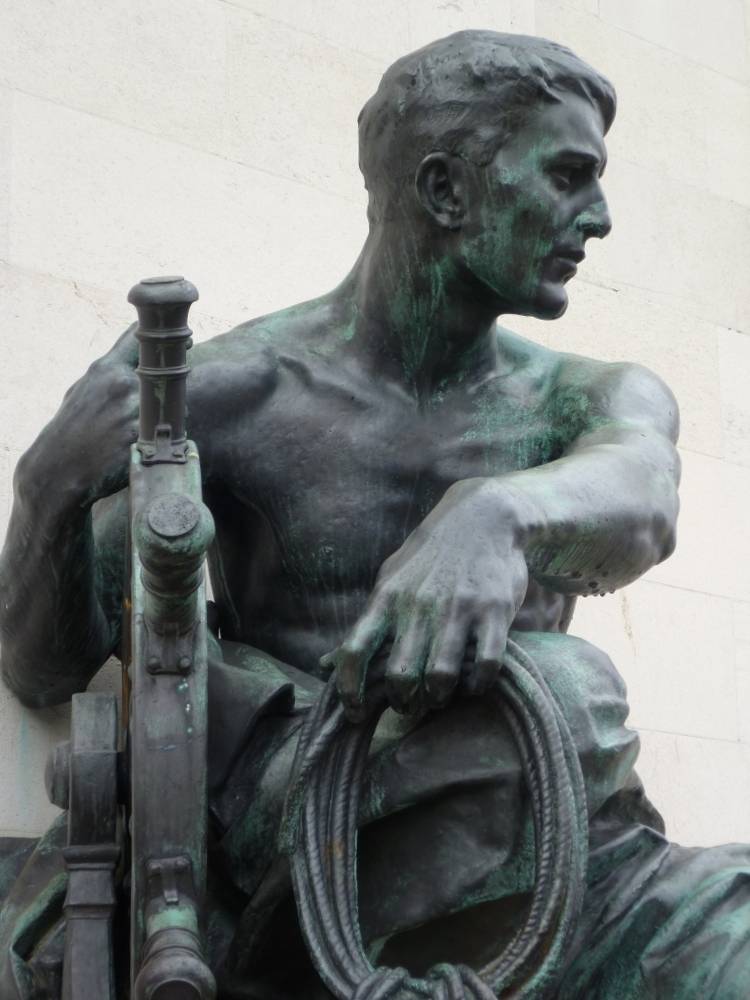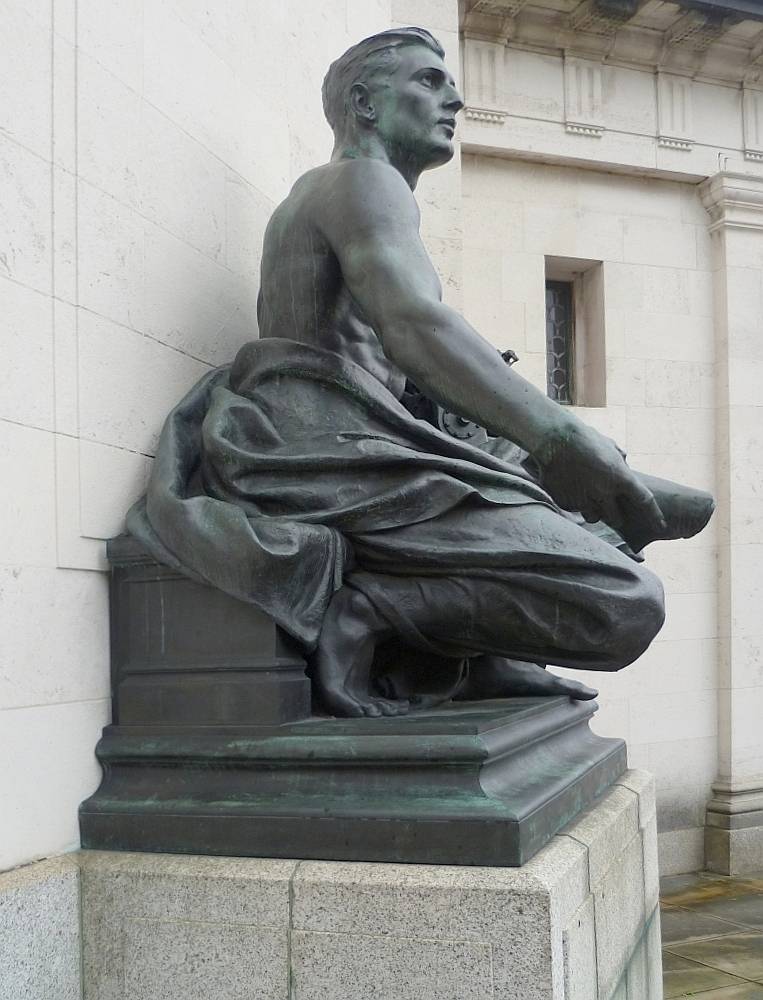

The Hall of Memory, Centenary Square, Birmingham, by S. N. Cooke and W. N. Twiste, opened 1925. The effect of this impressive domed Portland stone octagon is completed by its pedimented entrance and projecting porticos, and by four bronze sculptures by Albert Toft (1862-1949) on granite pedestals. These are inset diagonally on the shorter sides. The sculptures represent the Army, Navy, Air Force and Women's Services. The figures shown above, in situ, represent the army (on the right) and the navy (on the left).
The Prince of Wales laid the foundation stone for the memorial hall, which was built almost entirely by local craftsmen and paid for entirely by public subscription, on 12 June 1923. It was opened by Prince Arthur of Connaught almost exactly two years later, on 4 July 1925 (see "History"). Born in Birmingham and first trained at Wedgwood's in the West Midlands, Toft was the obvious choice of sculptor, and these allegorical figures are arguably his finest works.
The Army


The figure representing the army cradles a globe under one arm and holds the barrel of a machine gun in the other hand. He looks stern, ready to fulfill his function, which is clearly to defend and protect. Like the other figures, he is a little more than life-size, and has universalizing, timeless drapery rather than uniform. Like the other two male figures he looks alert, with strong features and a bare, muscular chest.
The Navy


The figure representing the navy seems poised for action too. Holding a ship's wheel in his right hand, he is windswept, the folds of his drapery blown back. He might be about to toss the coil of rope in his other hand, as if just bringing a ship into harbour.
The Air Force


Appropriately enough, the figure representing the air force, seen here from both sides, looks upwards. He holds a propeller blade and its adjuncts, with a rolled up paper, probably a flight-plan, in his right hand. As in the two figures previously described, there is an interesting balance between the classical drapes and the heavy technological reference. War is war: nothing changes the bigger picture. But its conduct has changed dramatically.
Women's Services


The women's services are memorialised in an Art Nouveau figure, again seen from both sides. More sitting than crouching, she is fully draped instead of half-draped, and is not bare-headed like the men. She might be in the Nursing Corps or doing desk work: she is turning pages with one hand, possibly of a book of remembrance, and holds a wreath in the other, either to crown victors of mourn those lost — cf. Grief on Toft's Boer War Memorial in Cardiff. The Birmingham figure also looks down. Her role is supportive. She is not engaged in the fighting, but responsive to it.

Interior of the Hall
David Cannadine points out that the "financing and construction of Birmingham's war memorial were very protracted, with debates over what it should be, how much it should cost and how it should be paid for" (128). In the event the public footed a bill for £60,000 ("History"), and the outcome of the debates was an exceptionally fine tribute. Inside the Hall, Books of Remembrance for both World Wars rest in a glass-lidded casket on a rich marble sarcophagus. A third such book, for more recent losses, is kept here too. There are also further carvings by the later Birmingham sculptor William Bloye (1890-1975), quite different in style — Primitivist reliefs of soldiers (see Foster 143 for further details of this later sculptor's work here).
Related Material
Photographs and formatting by the author. You may use these images without prior permission for any scholarly or educational purpose as long as you (1) credit the photographer and (2) link your document to this URL in a web document or cite the Victorian Web in a print one.]
Bibliography
Cannadine, David. In Churchill's Shadow: Confronting the past in Modern Britain. London: Penguin, 2003. Print.
Foster, Andy. Birmingham. Pevsner Architectural Guides. New Haven & London: Yale University Press, 2005. Print.
"History of the Hall of Memory". Birmingham City Council. Web. 19 August 2012.
Last modified 28 August 2012